Archive for the ‘Decisions’ Category
The Illusion of Planning
Planning is important work, but it’s non-value added work. Short and sweet – planning is waste.
Lean has taught us waste should be reduced, and the best way to reduce waste from planning is to spend less time planning. (I feel silly writing that.) Lean has taught us to reduce batch size, and the best way to reduce massive batch size of the annual planning marathon is to break it into smaller sessions. (I feel silly writing that too.)
Unreasonable time constraints increase creativity. To create next year’s plan, allocate just one for the whole thing. (Use a countdown timer.) And, because batch size must be reduced, repeat the process monthly. Twelve hours of the most productive planning ever, and countless planning hours converted into value added work.
Defining the future state and closing the gap is not the way to go. The way to go is to define the current state (where you are today) and define how to move forward. Use these two simple rules to guide you:
- Do more of what worked.
- Do less of what didn’t.
Here’s an example process:
The constraint – no new hires. (It’s most likely the case, so start there.)
Make a list of all the projects you’re working on. Decide which to stop right now (the STOP projects) and which you’ll finish by the end of the month (the COMPLETED projects). The remaining projects are the CONTINUE projects, and, since they’re aptly named, you should continue them next month. Then, count the number of STOP and COMPLETED projects – that’s the number of START projects you can start next month.
If the sum of STOP and COMPLETED is zero, ask if you can hire anyone this month. If the answer is no, see you next month.
If the sum is one, figure out what worked well, figure out how to build on it, and define the START project. Resources for the START project should be the same as the STOP or COMPLETED project.
If the sum is two, repeat.
Now ask if you can hire anyone this month. If the answer is no, you’re done. If the answer is yes, define how many you can hire.
With your number in hand, and building on what worked well, figure out the right START project. Resources must be limited by the number of new hires, and the project can’t start until the new hire is hired. (I feel silly writing that, but it must be written.) Or, if a START project can’t be started, use the new resource to pile on to an important CONTINUE project.
You’re done for the month, so send your updated plan to your boss and get back to work.
Next month, repeat.
The process will evolve nicely since you’ll refine it twelve times per year.
Ultimately, planning comes down to using your judgment to choose the next project based on the resources you’re given. The annual planning process is truly that simple, it’s just doesn’t look that way because it’s spread over so many months. So, if the company tells its leaders how many resources they have, and trusts them to use good judgment, yearly planning can be accomplished in twelve hours per year (literally). And since the plan is updated monthly, there’s no opportunity for emergency re-planning, and it will always be in line with reality.
Less waste and improved quality – isn’t that what lean taught us?
Summoning The Courage To Ask
I’ve had some great teachers in my life, and I’m grateful for them. They taught me their hard-earned secrets, their simple secrets. Though each had their own special gifts, they all gave them in the same way – they asked the simplest questions.
Today’s world is complex – everything interacts with everything else; and today’s pace is blistering – it’s tough to make time to understand what’s really going on. To battle the complexity and pace, force yourself to come up with the simplest questions. Here are some of my favorites:
For new products:
- Who will buy it?
- What must it do?
- What should it cost?
For new technologies:
- What problem are you trying to solve?
- How will you know you solved it?
- What work hasn’t been done before?
For new business models:
- Why are you holding onto your decrepit business model?
For problems:
- Can you draw a picture of it on one page?
- Can you make it come and go?
For decisions:
- What is the minimum viable test?
- Why not test three or four options at the same time?
For people issues:
- Are you okay?
- How can I help you?
For most any situation:
- Why?
These questions are powerful because they cut through the noise, but their power couples them to fear and embarrassment – fear that if you ask you’ll embarrass someone. These questions have the power to make it clear that all the activity and hype is nothing more than a big cloud of dust heading off in the wrong direction. And because of that, it’s scary to ask these questions.
It doesn’t matter if you steal these questions directly (you have my permission), twist them to make them your own, or come up with new ones altogether. What matters is you spend the time to make them simple and you summon the courage to ask.
Image credit — Montecruz Foto.
Can It Grow?
 If you’re working in a company you like, and you want it to be around in the future, you want to know if it will grow. If you’re looking to move to a new company, you want to know if it has legs – you want to know if it will grow. If you own stock, you want to know if the company will grow, and it’s the same if you want to buy stock. And it’s certainly the case if you want to buy the whole company – if it can grow, it’s worth more.
If you’re working in a company you like, and you want it to be around in the future, you want to know if it will grow. If you’re looking to move to a new company, you want to know if it has legs – you want to know if it will grow. If you own stock, you want to know if the company will grow, and it’s the same if you want to buy stock. And it’s certainly the case if you want to buy the whole company – if it can grow, it’s worth more.
To grow, a company has to differentiate itself from its competitors. In the past, continuous improvement (CI) was a differentiator, but today CI is the minimum expectation, the cost of doing business. The differentiator for growth is discontinuous improvement (DI).
With DI, there’s an unhealthy fascination with idea generation. While idea generation is important, companies aren’t short on ideas, they’re short on execution. But the one DI differentiator is the flavor of the ideas. To do DI a company needs ideas that are radically different than the ones they’re selling now. If the ideas are slightly twisted variants of today’s products and business models, that’s a sure sign continuous improvement has infiltrated and polluted the growth engine. The gears of the DI engine are gummed up and there’s no way the company can sustain growth. For objective evidence the company has the chops to generate the right ideas, look for a process that forces their thinking from the familiar, something like Jeffrey Baumgartner’s Anticonventional Thinking (ACT).
For DI-driven growth, the ability to execute is most important. With execution, the first differentiator is how the company investigates radically new ideas. There are three differentiators – a focus on speed, a “market first” approach, and the use of minimum viable tests (MVTs). With new ideas, it’s all about how fast you can learn, so speed should come through loud and clear. Without a market, the best idea is worthless, so look for “market first” thinking. Idea evaluation starts with a hypothesis that a specific market exists (the market is clearly defined in the hypothesis) which is evaluated with a minimum viable test (MVT) to prove or disprove the market’s existence. MVTs should error on the side of speed – small, localized testing. The more familiar minimum viable product (MVP) is often an important part of the market evaluation work. It’s all about learning about the market as fast as possible.
Now, with a validated market, the differentiator is how fast company can rally around the radically new idea and start the technology and product work. The companies that can’t execute slot the new project at the end of their queue and get to it when they get to it. The ones that can execute stop an existing (lower value) project and start the new project yesterday. This stop-to-start behavior is a huge differentiator.
The company’s that can’t execute take a ready-fire-aim approach – they just start. The companies that differentiate themselves use systems thinking to identify gaps in resources and capabilities and close them. They do the tough work of prioritizing one project over another and fully staff the important ones at the expense of the lesser projects. Rather than starting three projects and finishing none, the companies that know how to do DI start one, finish one, and repeat. They know with DI, there’s no partial credit for a project that’s half done.
All companies have growth plans, and at the highest level they all hang together, but some growth plans are better than others. To judge the goodness of the growth plan takes a deeper look, a look into the work itself. And once you know about the work, the real differentiator is whether the company has the chops to execute it.
Image credit – John Leach.
Slower Can Be Faster
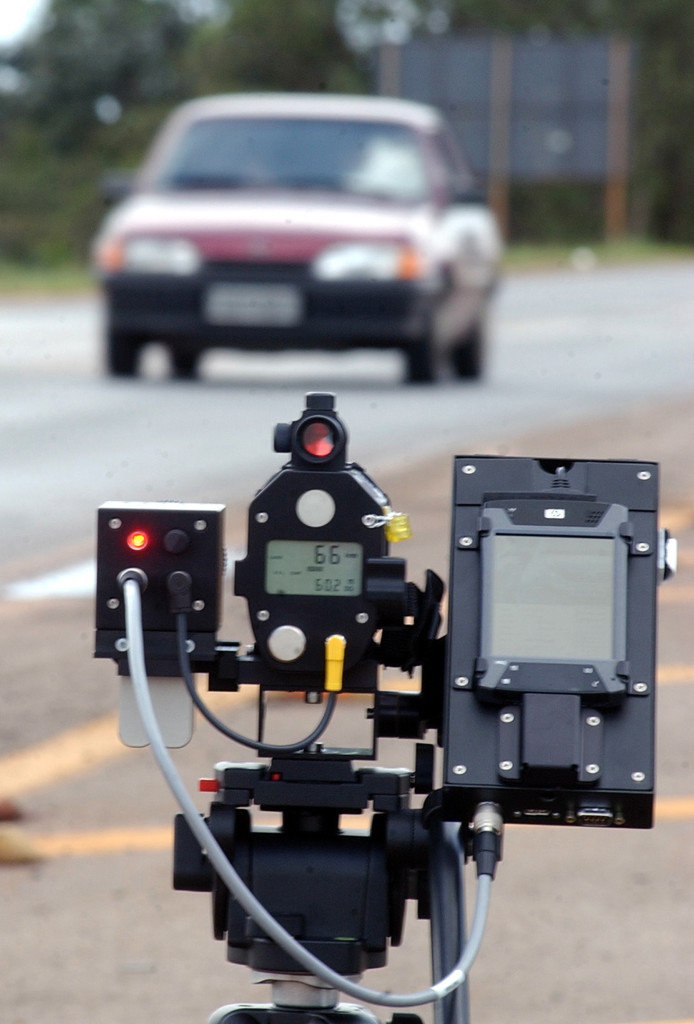 There are two types of drivers – those that speed as a way of life and those that speed when they forget to pay attention. But for both, speed kills.
There are two types of drivers – those that speed as a way of life and those that speed when they forget to pay attention. But for both, speed kills.
For the everyday speeder, life is an opportunity to push limits and break rules. Every highway is a Formula One course; every traffic light an opportunity to run the red light. They know every speed trap and have honed their drag racing tactics, and, mostly, they don’t get caught. And driving this way year-on-year, they no longer realize they’re speeding and no longer see it as dangerous behavior. They see themselves as invincible and even take pride in their reckless behavior, and that’s dangerous.
If you’ve made the product before, or you’ve done something similar, you know all the traps and a fast business decision isn’t bad. But fast all the time isn’t the answer. When you’re in country that drives on the wrong side of the road and you approach a round-about, slower is better. When you don’t understand the road signs; when your left-right decisions are backward; and you don’t know how to negotiate the big circle of traffic, it’s pretty clear slower is better. But if you’ve been successful with your habitual speeding, you’ll likely accelerate into the traffic circle, rear-end someone, and flip yourself end others into a deadly pileup. And if you survive, likely curse those stupid drivers who didn’t know enough to get out of your way.
But there’s a simpler case that seals it. When you don’t know where you’re going, clicking off miles on the odometer isn’t progress, it’s just activity (that burns fuel). In these conditions, going fast in the wrong directions is worse than not driving at all. When you’re lost, it doesn’t make sense to speed.
The conscientious speeder keeps two hands on the wheel and maintain safe separation distance at upwards of ten car lengths. For them, every day is an opportunity to check the tire pressure and check the dipstick for oil. They plan out the trip, check the road conditions, and pay attention. (Cell phones off for these folks.)
Today’s cars are quiet and smooth which makes for calm, comfortable driving. But they’re also powerful, and, even with good intentions, a brief lapse in attention can generate breakneck speed. The conscientious speeder backs off the accelerator as soon as attention returns, and the danger is low. But, when a lapse in attention overlaps with a quick change in driving conditions (a deer runs across the highway, or the car in front jacks on the breaks), you can’t react quickly enough, and that’s dangerous.
If you’ve made the product before, or you’ve done something similar, and you checked the tire pressure, a lapse in attention once in a while isn’t bad. But doing the same drive every day and lulling yourself into a road trip stupor isn’t the answer. When you’re cruising over the limit on a well-lit, dead-straight highway, in your serenity you can easily speed past your exit without knowing. And the faster you’re going, the more exits you’ll miss until you realize it.
Sometimes, when the conditions are right, slower is faster.
The Importance Of Knowing Why You’re In The Boat
Whether at work or home, there are highs and lows. And you’re not getting special treatment, that’s how it is for everyone. And it’s a powerful fundamental, so don’t try to control it, ride it.
When the sailing is smooth, at some point it won’t be – the winds change, that’s what they do. And when you’re suddenly buffeted from a new direction, you take action. But what action? More sail or less? Port or starboard? Heave the anchor or abandon ship? It depends.
Your actions depend on your why. Regardless of wind or tide, your why points where it points and guides your actions. Much like magnetic north doesn’t move if you spin your compass, your long term why knows where it points. If the storm on the horizon is dead ahead, you go around it. But it’s a balance – deviate to skirt the storm, but do it with your long term destination in mind. If you know your long term why, the best course heading is clear.
Often you set sail without realizing you don’t have your why battened down and stowed. When you sail where you sailed last time, you know the landmarks and use them to navigate. You can unknowingly leave your why at the pier and still get to your destination. But when you’re blown out to sea and can no longer see the landmarks, your moral compass, your long term why, is the only way to tack and jibe toward your destination.
Before you set sail, it’s best to know why you’re in the boat.
Choose Yourself
 We’ve been conditioned to ask for direction; to ask for a plan; and ask for permission. But those ways no longer apply. Today that old behavior puts you at the front of the peloton in the great race to the bottom.
We’ve been conditioned to ask for direction; to ask for a plan; and ask for permission. But those ways no longer apply. Today that old behavior puts you at the front of the peloton in the great race to the bottom.
The old ways are gone.
Today’s new ways: propose a direction (better yet, test one out on a small scale); create and present a radical plan of your own (or better, on the smallest of scales test the novel aspects and present your learning); and demonstrate you deserve permission by initiating activity on something that will obsolete the very thing responsible for your success.
People that wait for someone to give them direction are now a commodity, and with commodities it always ends in the death spiral of low cost providers putting each other out of business. As businesses are waist deep in proposals to double-down on what hasn’t worked and are choking on their flattened S-curves, there’s a huge opportunity for people that have the courage to try new things on their own. Today, if you initiate you’ll differentiate.
[This is where you say to yourself – I’ve already got too much on my plate, and I don’t have the time or budget to do more (and unsanctioned) work. And this is where I tell you your old job is already gone, and you might as well try something innovative. It’s time to grab the defibrillator and jolt your company out of its flatline. ]
It’s time to respect your gut and run a low cost, micro-experiment to test your laughable idea. (And because you’ll keep the cost low, no one will know when it doesn’t go as you thought. [They never do.]) It’s time for an underground meeting with your trusted band of dissidents to plan and run your pico-experiment that could turn your industry upside down. It’s time to channel your inner kindergartener and micro-test the impossible.
It’s time to choose yourself.
Incomplete Definition – A Way Of Life
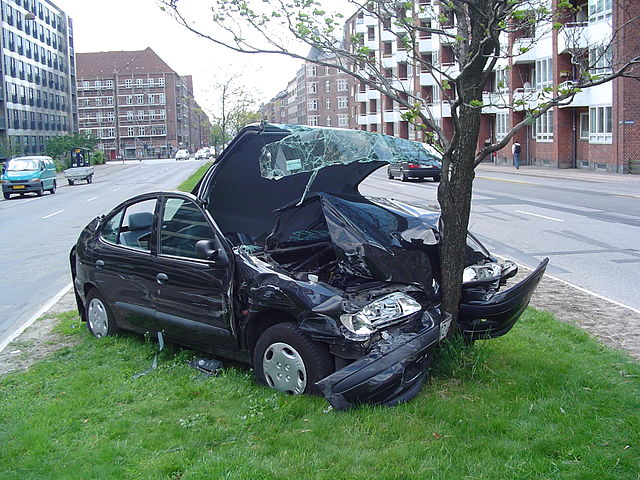 At the start of projects, no one knows what to do. Engineering complains the specification isn’t fully defined so they cannot start, and marketing returns fire with their complaint – they don’t yet fully understand the customer needs, can’t lock down the product requirements, and need more time. Marketing wants to keep things flexible and engineering wants to lock things down; and the result is a lot of thrashing and flailing and not nearly enough starting.
At the start of projects, no one knows what to do. Engineering complains the specification isn’t fully defined so they cannot start, and marketing returns fire with their complaint – they don’t yet fully understand the customer needs, can’t lock down the product requirements, and need more time. Marketing wants to keep things flexible and engineering wants to lock things down; and the result is a lot of thrashing and flailing and not nearly enough starting.
Both camps are right – the spec is only partially formed and customer needs are only partially understood – but the project must start anyway. But the situation isn’t as bad as it seems. At the start of a project fully wrung out specs and fully validated customer needs aren’t needed. What’s needed is definition of product attributes that set its character, definition of how those attributes will be measured, and definition of the competitive products. The actual values of the performance attributes aren’t needed, just their name, their relative magnitude expressed as percent improvement, and how they’ll be measured.
And to do this the project manager asks the engineering and marketing groups to work together to create simple bar charts for the most important product attributes and then schedules the meeting where the group jointly presents their single set of bar charts.
This little trick is more powerful than it seems. In order to choose competitive products, a high level characterization of the product must be roughed out; and once chosen they paint a picture of the landscape and set the context for the new product. And in order to choose the most important performance (or design) attributes, there must be convergence on why customers will buy it; and once chosen they set the context for the required design work.
Here’s an example. Audi wants to start developing a new car. The marketing-engineering team is tasked to identify the competitive products. If the competitive products are BMW 7 series, Mercedes S class, and the new monster Hyundai, the character of the new car and the character of the project are pretty clear. If the competitive products are Ford Focus, Fiat F500, and Mini Cooper, that’s a different project altogether. For both projects the team doesn’t know every specification, but it knows enough to start. And once the competitive products are defined, the key performance attributes can be selected rather easily.
But the last part is the hardest – to define how the performance characteristics will be measured, right down to the test protocols and test equipment. For the new Audi fuel economy will be measured using both the European and North American drive cycles and measured in liters per 100 kilometer and miles per gallon (using a pre-defined fuel with an 89 octane rating); interior noise will be measured in six defined locations using sound meter XYZ and expressed in decibels; and overall performance will be measured by the lap time around the Nuremburg Ring under full daylight, dry conditions, and 25 Centigrade ambient temperature, measured in minutes.
Bar charts are created with the names of the competitive vehicles (and the new Audi) below each bar and performance attribute (and units, e.g., miles per gallon) on the right. Side-by-side, it’s pretty clear how the new car must perform. Though the exact number is not know, there’s enough to get started.
At the start of a project the objective is to make sure you’re focusing on the most performance attributes and to create clarity on how the attributes (and therefore the product) will be measured. There’s nothing worse than spending engineering resources in the wrong area. And it’s doubly bad if your misplaced efforts actually create constraints that limit or reduce performance of the most important attributes. And that’s what’s to be avoided.
As the project progresses, marketing converges on a detailed understanding of customer needs, and engineering converges on a complete set of specifications. But at the start, everything is incomplete and no part of the project is completely nailed down.
The trick is to define the most important things as clearly as possible, and start.
How long will it take?
 How long will it take? The short answer – same as last time. How long do we want it to take? That’s a different question altogether.
How long will it take? The short answer – same as last time. How long do we want it to take? That’s a different question altogether.
If the last project took a year, so will the next one. Even if you want it to take six months, it will take a year. Unless, there’s a good reason it will be different. (And no, the simple fact you want it to take six months is not a good enough reason in itself.)
Some good reasons it will take longer than last time: more work, more newness, less reuse, more risk, and fewer resources. Some good reasons why it will go faster: less work, less newness, more reuse, less risk, more resources. Seems pretty tight and buttoned-up, but things aren’t that straight forward.
With resources, the core resources are usually under control. It’s the shared resources that are the problem. With resources under their control (core resources) project teams typically do a good job – assign dedicated resources and get out of the way. Shared resources are named that way because they support multiple projects, and this is the problem. Shared resources create coupling among projects, and when one project runs long, resource backlogs ripple through the other projects. And it gets worse. The projects backlogged by the initial ripple splash back and reflect ripples back at each other. Understand the shared resources, and you understand a fundamental dynamic of all your projects.
Plain and simple – work content governs project timelines. And going forward I propose we never again ask “How long will it take?” and instead ask “How is the work content different than last time?” To estimate how long it will take, set up a short face-to-face meeting with the person who did it last time, and ask them how long it will take. Write it down, because that’s the best estimate of how long it will take.
It may be the best estimate, but it may not be a good one. The problem is uncertainty around newness. Two important questions to calibrate uncertainty: 1) How big of a stretch are you asking for? and 2) How much do you know about how you’ll get there? The first question drives focus, but it’s not always a good predictor of uncertainty. Even seemingly small stretches can create huge problems. (A project that requires a 0.01% increase in the speed of light will be a long one.) What matters is if you can get there.
To start, use your best judgment to estimate the uncertainty, but as quickly as you can, put together a rude and crude experimental plan to reduce it. As fast as you can execute the experimental plan, and let the test results tell you if you can get there. If you can’t get there on the bench, you can’t get there, and you should work on a different project until you can.
The best way to understand how long a project will take is to understand the work content. And the most important work content to understand is the new work content. Choose several of your best people and ask them to run fast and focused experiments around the newness. Then, instead of asking them how long it will take, look at the test results and decide for yourself.
The Middle Term Enigma
 Short term is getting shorter, and long term is a thing of the past.
Short term is getting shorter, and long term is a thing of the past.
We want it now; no time for new; it’s instant gratification for us, but only if it doesn’t take too long.
A short time horizon drives minimization. Minimize waste; reduce labor hours; eliminate features and functions; drop the labor rate; cut headcount; skim off the top. Short term minimizes what is.
Short term works in the short term, but in the long term it’s asymptotic. Short term hits the wall when the effort to minimize overwhelms the benefit. And at this cusp, all that’s left is an emaciated shadow of what was. Then what? The natural extrapolation of minimization is scary – plain and simple, it’s a race to the bottom.
Where short term creates minimization, long term creates maximization. But, today, long term has mostly negative connotations – expensive, lots of resources, high risk, and low probability of success. At the personal level long term, is defined as a timeframe longer than we’re measured or longer than we’ll be in the role.
But, thankfully, there comes a time in our lives when it’s important for personal reasons to inject long term antibodies into the short term disease. But what to inject?
Before what, you must figure out why you want to swim against the current of minimization. If it’s money, don’t bother. Your why must have staying power, and money’s is too short. Some examples of whys that can endure: you want a personal challenge; you want to help society; your ego; you want to teach; or you want to help the universe hold off entropy for a while. But the best why is the work itself – where the work is inherently important to you.
With your why freshly tattooed on your shoulder, choose your what. It will be difficult to choose, but that’s the way it is with yet-to-be whats. (Here’s a rule: with whats that don’t yet exist, you don’t know they’re the right one until after you build them.) So just choose, and build.
Here are some words to describe worthwhile yet-to-be whats: barely believable, almost heretical, borderline silly, and on-the-edge, but not over it. These are the ones worth building.
Building (prototyping) can be expensive, but that’s not the type of building I’m talking about. Building is expensive when we try to get the most out of a prototype. Instead, to quickly and efficiently investigate, the mantra is: minimize the cost of the build. (The irony is not lost on me.) You’ll get less from the prototype, but not much. And most importantly, resource consumption will be ultra small – think under the radar. Take small, inexpensive bites; cover lots of ground; and build yourself toward the right what.
Working prototypes, even crude ones, are priceless because they make it real. And it’s the series of low cost, zig-zagging, leap-frogging prototypes that make up the valuable war chest needed to finance the long campaign against minimization.
Short term versus long term is a balancing act. Your prototype must pull well forward into the long term so, when the ether of minimization pulls back, it all slides back to the middle term, where it belongs.
Choose to Choose
 There will always be more work than time – no choice there. But, you can choose your mindset. You can choose to be overwhelmed; you can complain; and you can feel bad for yourself. You can also choose to invert it – you only work on vital projects because less important ones aren’t worth your time. Inverted, work is prioritized to make best use of your valuable time. When there’s too much work you can whine and complain, or you can value yourself – your choice
There will always be more work than time – no choice there. But, you can choose your mindset. You can choose to be overwhelmed; you can complain; and you can feel bad for yourself. You can also choose to invert it – you only work on vital projects because less important ones aren’t worth your time. Inverted, work is prioritized to make best use of your valuable time. When there’s too much work you can whine and complain, or you can value yourself – your choice
Most of us don’t choose what we work on, and sometimes it’s work we’ve done before. You can choose to look at as mind numbing tedium, or you can flip it. You can look at it as an opportunity to do your work a better way; to try a more effective approach; to invent something new. With repeat work you can dull it down or try to shine – your choice.
Sometimes we’re asked to do new and challenging work. You can choose to be afraid; you can make excuses; and you can call in sick for the next month. Or you can twist it to your advantage and see it as an opportunity to stretch. With challenging work you can stunt yourself or grow – your choice.
Negativity repels and positivity attracts – it’s time for you to choose.
Creativity’s Mission Impossible
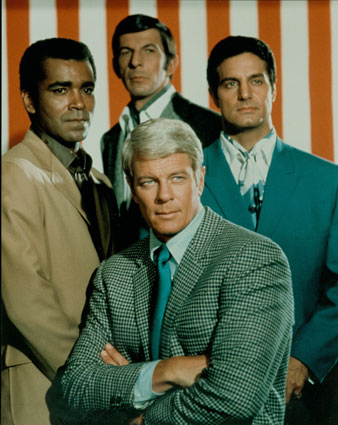 Whether it’s a top-down initiative or a bottom-up revolution, your choice will make or break it.
Whether it’s a top-down initiative or a bottom-up revolution, your choice will make or break it.
When you have the inspiration for a bottom-up revolution, you must be brave enough to engage your curiosity without self-dismissing. You’ll feel the automatic urge to self-reject – that will never work, too crazy, too silly, too loony – but you must resist. (Automatic self-rejection is the embodiment of your fear of failure.) At all costs you must preserve the possibility you’ll try the loony idea; you must preserve the opportunity to learn from failure; you must suspend judgment.
Now it’s time to tell someone your new thinking. Summon the next level of courage, and choose wisely. Choose someone knowledgeable and who will be comfortable when you slather them with the ambiguity. (No ambiguity, no new thinking.) But most importantly, choose someone who will suspend judgment.
You now have critical mass – you, your partner in crime, and your bias for action. Together you must prevent the new thinking from dying on the vine. Tell no one else, and try it. Try it at a small scale, try it in your garage. Fail-learn-fail until you have something with legs. Don’t ask. Suspend judgment, and do.
And what of top down initiatives? They start with bottom-up new thinking, so the message is the same: suspend judgment, engage your bias for action, and try it. This is the precursor to the thousand independent choices that self-coordinate into a top-down initiative.
New thinking is a choice, and turning it into action is another. But this is your mission, if you choose to accept it.
I will be holding a half-day Workshop on Systematic DFMA Deployment on June 13 in RI. (See bottom of linked page.) I look forward to meeting you in person.
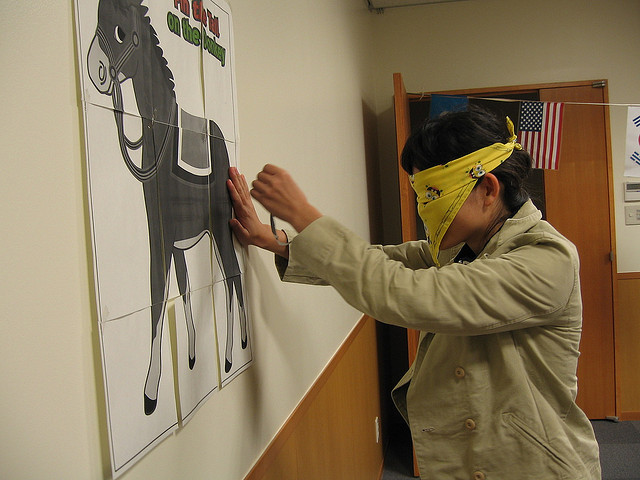

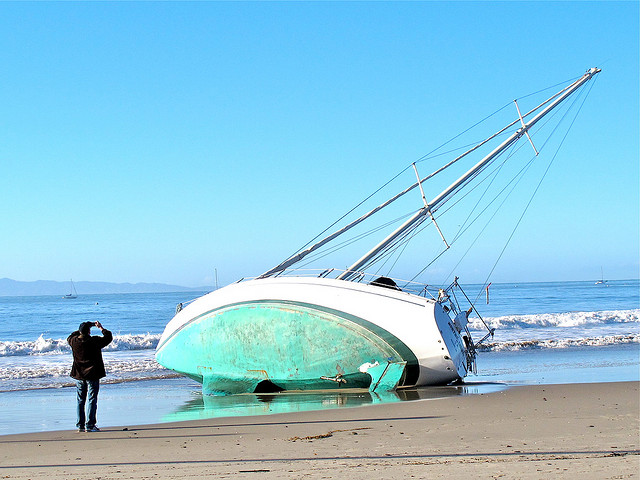
 Mike Shipulski
Mike Shipulski